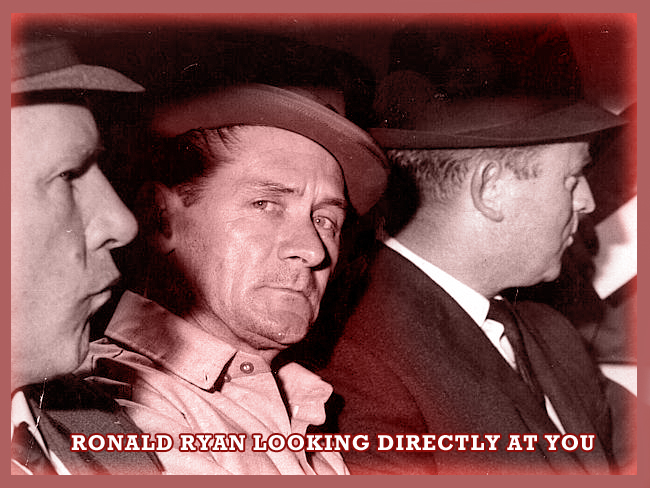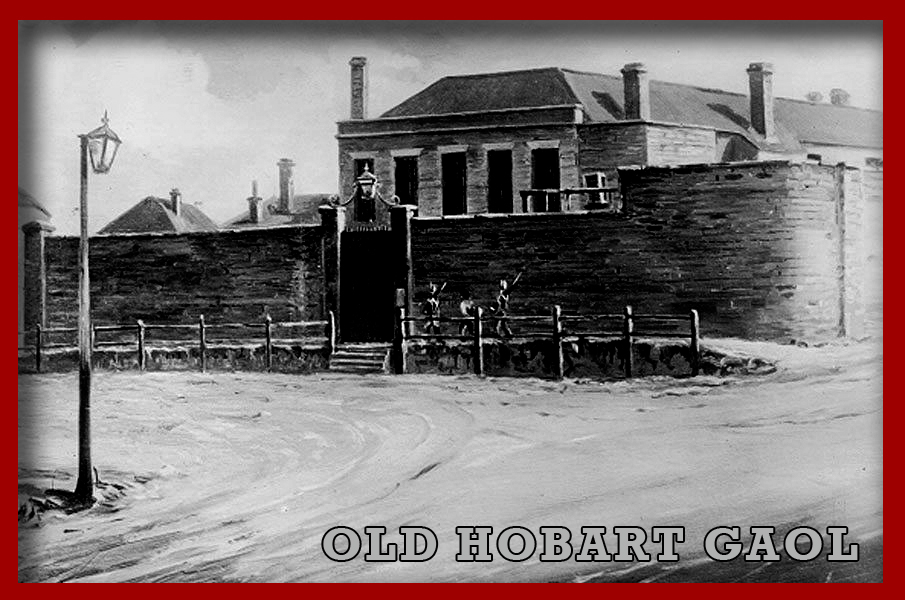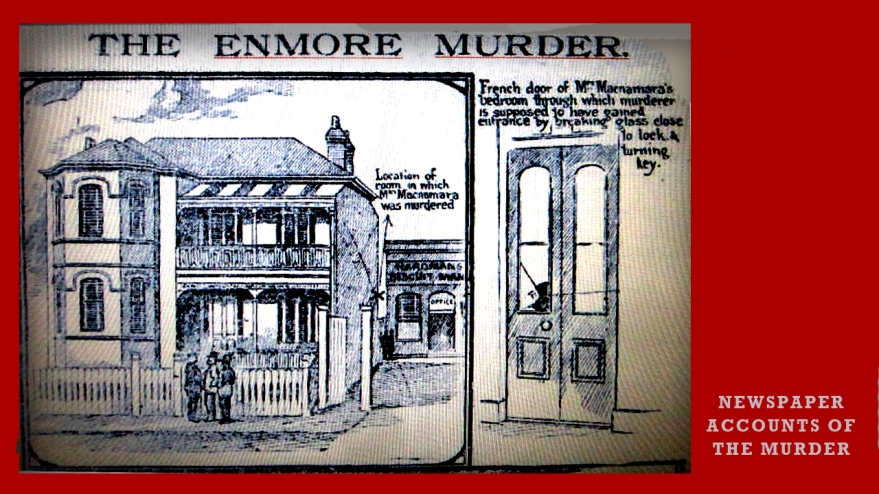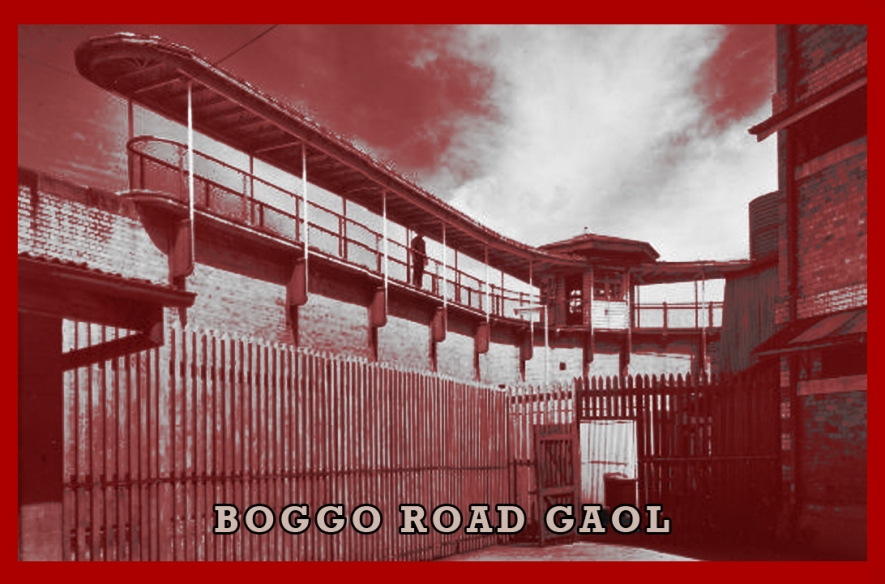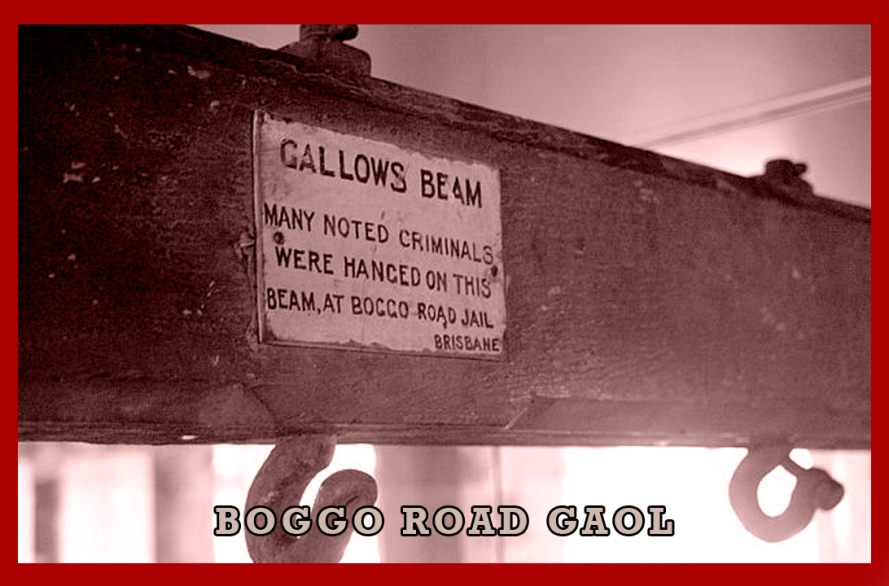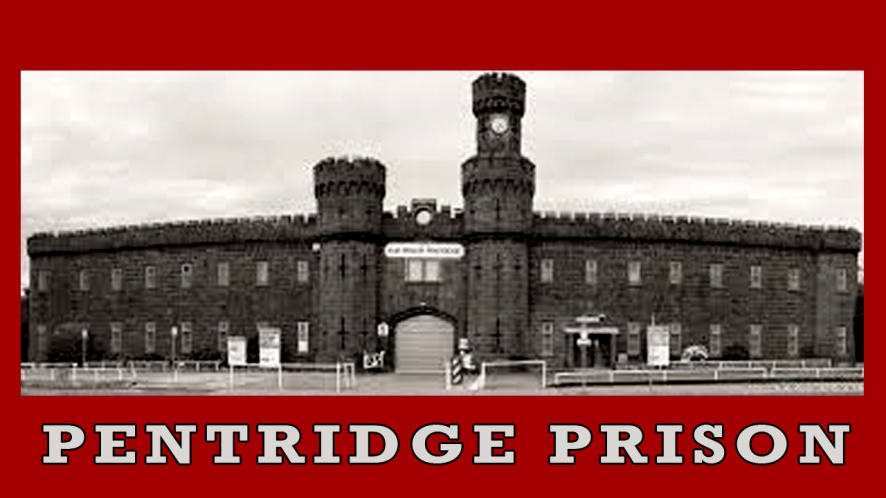
The Execution of Frances Knorr
Frances (Minnie) Knorr (nee Thwaites) born in England, Frances (known as ‘Minnie’) migrated to Australia, in 1887, she was one of only five women hanged in Victoria.
On 2 November 1889 at St Philip’s Church of England married Rudolph Knorr, a German-born waiter. They moved to Melbourne, then onto Adelaide. During the financial depression, of the 1890’s and after the birth of their daughter in 1892, Rudi was sentenced to a gaol term in Adelaide for selling off the family’s furniture, even though, they did not own the furniture yet themselves.
Fending for herself and child Frances tried to support herself by dressmaking but when this venture failed she stole money and returned to Melbourne. Whilst in Melbourne she had an affair with a man named Ted (Edward) Thompson, living together, but he soon left her as well.
Desperate for money Frances turned to the business of ‘baby farming’ taking care of other women’s (usually illegitimate, read into that, unwanted) children. Frances Knorr moved around Melbourne frequently living in several rented houses and when her husband was released the couple returned to Sydney.
After a new tenant, discovered of the corpses of three infants in premises at 25 Davies Street Brunswick, Melbourne, that Frances rented, she was arrested and, after giving birth to a second child on 4 September 1893,Frances was brought back to Melbourne, where she was tried for murder.
THE CRIME
The Argus
5/9/1883
TRAFFIC IN BABIES.
SHOCKING DISCOVERY AT
BRUNSWICK.
A CHILD’S BODY BURIED IN A
FURTHER SEARCH BEING MADE.
Added to the long list of child murders on the records at the City Morgue is one which was discovered yesterday by Mr. Clay, a commercial traveller, who has recently taken up his residence in Moreland-road, Brunswick.
He was digging in the garden, when he came across the body of a child, which had been buried about a foot beneath the surface. The police were advised of the matter, and Senior-constable Percival went to the place and took charge of the body.
The state of decomposition indicated that the child had been buried for about three months. The coroner for Bourke, Mr. Candler, has been informed of the discovery, and he will hold an inquest when the Brunswick police have had time to make the inquiries necessary in the case.
An examination of the body clearly showed that its death had undoubtedly been caused by violence, and that murder had been com-mitted. The skull was fractured, in fact almost broken to pieces. Other injuries were also visible on the body, which was perfectly nude. The corpse was placed by the police-man in a box and sent to the morgue.
Mr. Clay, the present occupier of the house, has only been in the occupation of the premises for a very short time, they having previously been vacant for a considerable period. From information gained by the police, it appears that a local agent was visited on the 10th of April last by a woman who wished to rent the house.
She paid a deposit of 4s., and got possession of the keys. On the 15th of the same month, or five days after securing the keys, she sent them back to the agent by a boy, who de-livered a message that the house did not suit. The same woman, it has been discovered, then removed to a house in Davis street, in close proximity to the one in which the body was found. It has also been discovered by the police that the woman, while in the former house, borrowed a spade from a neighbour, which she only kept for about a hour and then re-turned, the plea given when asking for the spade being that she wished to dig the garden. This woman, while occupying the house in Davis-street, came under the notice of the police in connection with a baby-farming case, and soon afterwards she most mysteriously disappeared from the district. Since her removal she has been most anxiously required by the police, owing to her connection with nearly all the recent cases of trafficking with babies which have been reported in The Argus as occurring in nearly all of the suburbs.
The Prahran, Carlton, Brunswick, and Coburg courts have each had cases brought under their notice, and the woman’s identity, owing to her innumerable aliases, has almost become an impossibility. It is estimated by the police that this woman has been the means of scattering scores of children throughout Melbourne and suburbs. Owing to the discovery the police at Brunswick are making a thorough search of the yards of the two houses which have been occupied by this woman. These yards are being thoroughly dug over, but up to last night nothing further had been discovered. The work will be continued this morning.
From the information already in the possession of the Brunswick police, it may be seen that there is reasonable ground for sup-position that the present case of child murder will be presently cleared of all the mystery, and the perpetrator of the murder brought to justice. For many months past the crime of infanticide has been prevalent in the city and suburbs, and the records of the city and district coroners have been plentifully marked with cases in which verdicts of murder have been re-turned against some person or persons un-known in connection with the deaths of infants.
The bodies have been found in field and river, on the public street, and in private enclosures, and while most have been wrapped in paper and clothing, some have been absolutely nude. The post-mortem examinations made by the doctors have generally shown that death was caused by suffocation, induced by pressure, and that the abandonment was after death, but in one instance recently, where the body was found in the bay, it was discovered that death had been due to drowning, and that therefore the child must have been cast alive into the water and abandoned to the tide.
In all these cases the police and detectives were employed in the task of tracing the parentage of the children, but in none did they succeed. Indeed it is remarkable that for years past only one such case has been satisfactorily cleared up. In that the detective police succeeded in establishing the identity of the child, but only after its mother had committed suicide at the residence of her employer in East Melbourne. In addition to the children thus murdered and abandoned, there have been many others which have come directly under the notice of the police though not of the coroners. Those are the unfortunates which have been left alive in public parks and on doorsteps by baby farmers, such as the one who was residing in April last in Brunswick.
These women, until the passing of the Infant Life Protection Act, had an easy way of ridding themselves of children they had undertaken to nurse. They had merely to feed them with unsuitable food till marasmus rendered death certain. Then a doctor would be called in ,and while under his care the child would die. His certificate of death from wasting was generally accepted as sufficient, unless there were circumstances surrounding the case specially suspicious and known to the police.
Since the passing of that act, however, every death of an infant boarded out has to be inquired into by the coroner, whether the circumstances are suspicious or not. The inquests thus held have exposed the regular baby-farmers to much danger of verdicts of manslaughter, and it has been noticed that of late such inquests have become less frequent, whilst cases of desertion or murder have be-come more common.
The suburban courts have been inundated with the deserted children, and the state is now supporting many who have been commended to it by “a heart-broken mother who cannot afford to bring the child up,” and is a “Roman Catholic” or a “Protestant,” as the case may be. If the discovery at Brunswick be traced to the woman who was suspected of being responsible for many of these desertions it will have considerable importance, the police having hitherto sought her in vain as an inveterate baby-farmer whose capture was much to be desired.
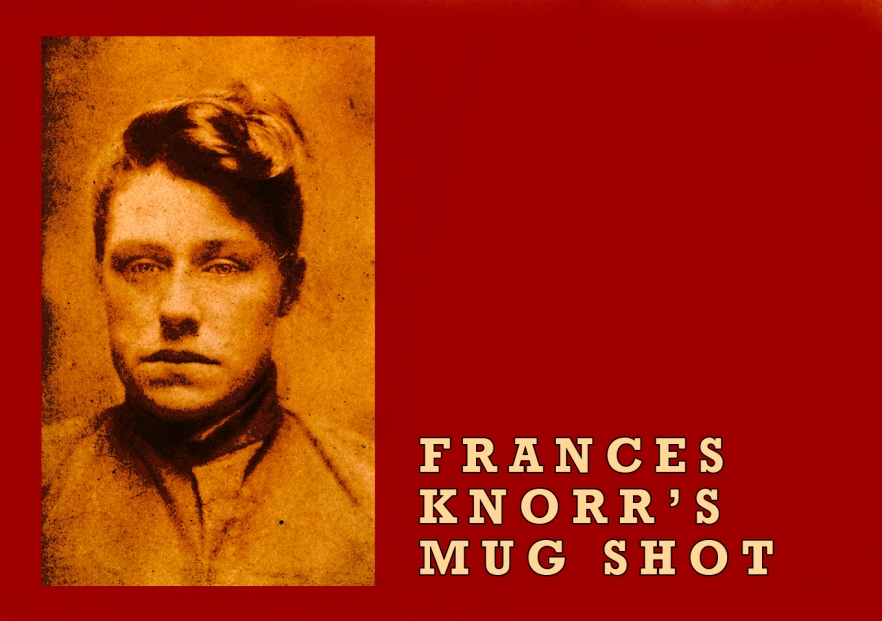
THE INQUEST
26/9/1893
The Argus
THE BRUNSWICK INFANTICIDES.
CONCLUSION OF THE INQUESTS.
The inquest on the third child, whose body was found buried in the back yard of a house at Brunswick, was concluded at the Morgue yesterday before the coroner for Bourke, Mr. Candler. The jury returned a verdict of wilful murder against Mrs. Knorr, and found that Rudolph Knorr was an accessory before the fact. Both prisoners were committed to take their trial at the Criminal Court on the15th November,
25 Davies Street as it is today, ( it is the house with a trailer locked to a tree).
http://www.street-directory.com.au/sd3_new/gsv/index.php?ll=-37.756637,144.966586
THE TRIAL
29/11/1893
Sydney Morning Herald
[BY TELEGRAPH.]
(FROM OUR CORRESPONDENT.)
THE BRUNSWICK BABY-FARMIMG CASE.
THE TRIAL OE FRANCES KNORR.
MELBOURNE, TUESDAY.
A sensational turn was given to-day to the trial of Frances Knorr, for the Brunswick baby-farm murder, by the appearance in the box of a young man named Edward Thompson, to whom she sent a letter while the inquests were going on at the morgue, asking him to ” manufacture ” certain evidence for production at her trial. Thompson, who described himself as a fishmonger, is a man about 27 years of age, with
the dress and demeanour of a better class artisan. In the letter certain lines had been obliterated by the witness with black chalk. His explanation was that when he got the letter these lines had already been run through in pencil, and as the words referred to” his intimacy” with the prisoner with whom he had lived, and as he did not want his mother to see them he blotted them out. Counsel for the prosecution asked whether the words scratched out were not these :—” Ted, you know you are guilty of what I am charged with, and if you look after my two children I will never divulge. I will bear the blame.” The witness replied that
there was not a word of truth in this. He could not remember either the exact words he had scratched out or the substance of them. The trial will be resumed to-morrow.
2/12/1893
Sydney Morning Herald
THE BRUNSWICK CHILD
TRIAL OF FRANCES KNORR.
A VERDICT OF GUILTY.
[BY TELEGRAPH.]
(FROM OUR CORRESPONDENT.)
MELBOURNE, FRIDAY.
At the Supreme Court criminal sittings to-day, before Mr. Justice Holroyd, the trial was concluded of Frances Knorr, alias Minnie Thwaites, for the wilful murder of a female child unknown at a house in Moreland-road, Brunswick, on or about the 11th April last. Mr. Walsh, Q.C., in addressing the jury on the whole case, said the account given by the prisoner in the box was the most extraordinary piece of audacious evidence he had ever heard in a court of justice.
Mr. Justice Holroyd, in summing up, said in this case there was no direct proof of killing, but the jury might, as the prosecutor asked them to do, come to a conclusion. The surrounding circumstances brought before them constituted such a charge that it was impossible to escape coming to the conclusion that the prisoner was guilty. Was there motive to impel the prisoner to commit the crime ?The highest sum she appeared to have got aspremium with any child was £20, and the lowest about £5. Judging from her impecunious circumstances, she seemed to have spent the money almost as soon as she got it. What she did was to hire out those babies, in some instances to pay for them for a time, and then cease to pay, and in other instances to take the children back, while in some cases it was not known what became of them. Of three children the prisoner herself had given an account. That being her habit, and it being necessary for her to live, she had a strong temptation upon her if she could not pay to get rid of the child by some other means. That was the force of the whole of the evidence as to the prisoner’s dealings with the babies. Whether that temptation overbore her on any occasion was another matter. The jury would have to consider what would be the conduct of a sensible innocent woman under such circumstances as those described by the prisoner.
She knew the law relating to the boarding-out of the children and regarded it as troublesome and inconvenient to comply with its provisions. That being so, she must have known the law would be still more particular in requiring an account from her of the death of a child under her charge.
Would a sensible woman bury a child in the garden, and would she not give in-formation to the police, and at any rate to the neighbours, who could as soon as possible ascertain whether or not the child died from convulsions ? If it had died from convulsions it was to her own interest to have made the fact known as promptly as possible.
The prosecution put it that if these precautions were taken to avoid the discovery of death what conclusion could be drawn but that the child met with foul play ? It was difficult to understand the object of substituting one child for another. The prosecution put the question, What was the object of passing one child for another except to conceal something from persons likely to make inquiries ?
As to the prisoner’s accusation against Thompson the jury would have to consider what motive Thompson had to murder the child, seeing he was under no obligation with regard to it. If the prisoner’s evidence were true, Thompson ought to stand his trial. If false, it was a horrible accusation. There were several coincidences in the mode of burying the three bodies. It was extraordinary, if the prisoner’s story were true, that three persons—Wilson, the prisoner, and Thompson should each bury a body at precisely the same depth, within an inch or two, and that the prisoner should bury a body in exactly the same spot, or so close as to touch that which she alleged had, unknown to her, been buried by Thompson.
The summing-up occupied three hours. At 25minutes past 3 the jury retired. Mr. Mullen asked his Honor, in the event of a certain verdict, to hear an application by Mr. Smith (the prisoner’s counsel), in Chambers on Monday. Mr. Justice Holroyd assisted.
After an absence from the Court of a little over half an hour, the jury returned, and at their own request were supplied with the versions of the prisoner, Edward Thompson, and Mrs. Thompson, in the letter from prisoner to himself respectively, of the words scratched out by Thompson in the letter.
At 5 o’clock the jury once more returned into court, this time with a verdict of ” guilty.” On hearing the verdict the prisoner swayed backwards and forwards in the dock, and sank down in tears upon the seat. Mr. Justice Holroyd said the prisoner would be removed until after Monday in order to hear an application from her counsel. The prisoner was then removed from the dock. She sobbed and cried, and had to be supported by a female warder and a police officer.
As she descended the steps from the dock, she turned to the gallery where Thompson was sitting, and exclaimed, ” God help yours ins, Ted,” and still sobbing and crying her last words as she disappeared through the doorway were ” God help my poor mother,” and ” God help my poor baby.” The scene was a most painful one.
The hearing of the further charges of murder against Mrs. Knorr and her husband, Rudolph Knorr, has been postponed till the 15th instant.
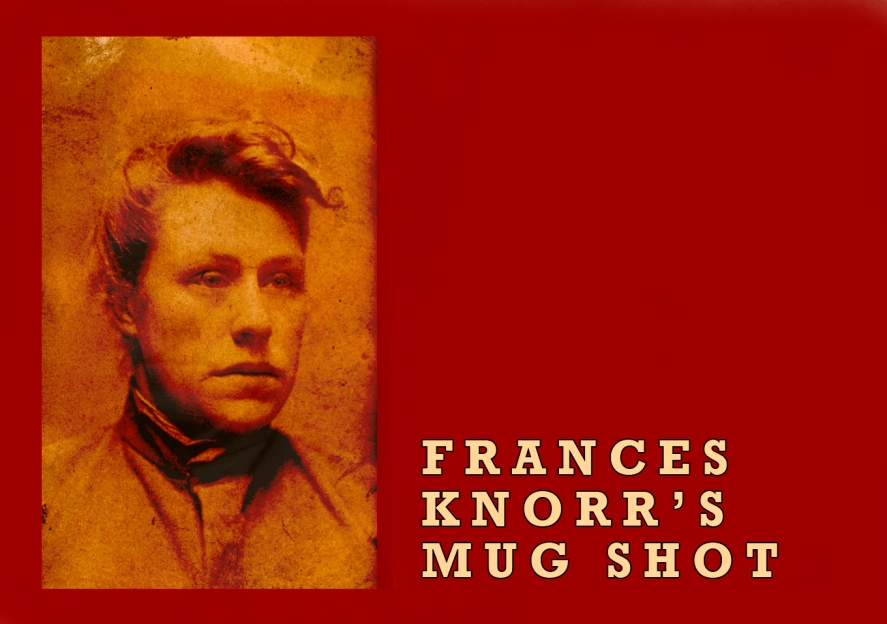
19/12/1893
Evening News
Melbourne Baby Farming.
FRANCES AND RUDOLPH KNORR.
Melbourne, Tuesday. — The Crown has entered a nolle prosequi in the two child murder cases in which Mrs. Knorr was committed for trial together with her husband, Rudolph Knorr. The latter was in consequence discharged from custody. A special meeting of the Cabinet has been convened for December 29, when the case of Frances Knorr, who is lying under sentence of death for the murder of an infant at Brunswick, will be considered.
(Nolle prosequi means a Crown Law Officer may inform any court, by writing under the officer’s hand, that the Crown will not further proceed upon any indictment)
THE HANGING
15/1/1894
The Argus
THE CASE OF MRS. KNORR.
CONDITION OF THE CONDEMNED WOMAN.
The execution of Mrs. Knorr will take place at the Melbourne gaol at 10 o’clock this morning in the presence of the sheriff, Mr. L. Ellis, the governor of the gaol, Captain Burrowes, and several magistrates. The sheriff has been approached by all sorts and conditions of men for orders for admission to witness the execution, but he has very properly refused them all, and has only issued orders to those who are entitled by virtue of their positions to gain admittance to the gaol. The suicide of Jones, the late hangman, having deprived the sheriff of the services of the only person in the colony who had had practical experience in the working of the gal-lows, special care has been taken to see that the new executioner, Howard, should have the benefit of any information or instruction that experience has suggested. As a result it is expected that no difficulty or hitch will occur this morning so far as the hangman is concerned. Much will depend on the behaviour of the condemned woman, however, and her state of mind during yesterday indicated that she was not likely to face her death calmly. In the morning she laboured under the influence of a strong religious excitement and while the other female prisoners were gathered together at a church service, sent messages to them asking them to sing “Abide with Me,”
and other hymns. Her requests were, of course, complied with, and in the singing of the hymns the condemned woman joined heartily. Later in the day her state be-came calmer, but at night, when her husband visited her and took farewell of her, the interview greatly disturbed her, and she utterly broke down. Her actions then and subsequently showed her to be thoroughly unnerved, and led Captain Burrowes, the governor of the gaol to enjoin upon the guard set over the woman the strictest watchfulness, lest in her excitement she might do herself injury.
DEPUTATION TO THE GOVERNOR.
The approaching execution of Mrs. Knorr was the occasion yesterday evening of a largely attended public meeting in Russell Street at the instance of a number of persons who object to capital punishment. From9 to 10 the little audience which assembled on the vacant land in Russell-street were addressed by a number of speakers, the most prominent of whom was Mr. Hancock; and having been reinforced by the Rev. Dr. Strong and the Rev. Mr. Edgar, a deputation of some 150 persons proceeded to Government-house. The news had been previously conveyed by telephone, and under the impression that an attack might possibly be made upon the premises a strong force of police, under command of Sub-inspector Walstab, was detailed from the neighbouring barracks to command all the avenues of approach. Presently the deputation arrived, and in view of its powerful character a selection of dele-gates, including the Rev. Dr. Strong, the Rev.
A. R. Edgar, Mr. Hancock, Mrs. Goldstein, and Mrs. Oldfield, was allowed to enter the building and to interview the Governor.
The Rev. Dr. Strong said that they had come with the object of getting Her Majesty’s representative, if he had it in his power, to extend the prerogative of mercy to Frances Knorr, now lying under sentence of death.
They had no word to say in extenuation of the crime of which the woman was convicted, but they felt that the ends of justice would be sufficiently met if the sentence of death were commuted to imprisonment for life. The hanging of a woman would be felt as a blot on Melbourne, and thus even at this late hour they had ventured to intrude upon His Excellency in the hope of saving the criminal’s life.
The Rev. S. R. Edgar said that the sentiment of the people was in favour of the extension of mercy towards the condemned woman. Had sufficient time been allowed he was sure that a numerously-signed petition would have been prepared on the prisoner’s behalf. The hanging of a woman would be an act which would disgrace the colony. In fact, as a proof of the strong public feeling on the question he might mention that at a meeting held in his church on an entirely different subject a petition in favour of the commutation of Mrs. Knorr’s sentence was dawn up and largely signed. They had no fresh facts to bring forward, but they asked for a reprieve on the simple ground of mercy.
Mr. J. Hancock said that everybody must sympathise with the position in which His Excellency was placed. They came at this late hour because they realised that a woman’s life was to be saved. If action had been so long delayed it was only because from the first the public had believed that women would not be executed. In a great number of similar cases in the old country female prisoners had been reprieved. When the public of the colony read the details of the execution in the papers they would recognise that the real criminals had escaped. The colony was not in such a terrible condition that a victim was required. Unfortunately, at the trial stress had not been laid upon the epileptic symptoms to which the unfortunate woman was subject. The subject had been brought under the notice of the Premier by telephone, but Mr. Patterson had held out no hope of any remission of the sentence. If His Excellency would only intervene it would add to his popularity, not only in this world but in the next.
16/1/1894
Narracourte Herald
Tbe Execution of Mrs. Knorr.
(By Telegraph.)
Melbourne, January 15.,
Mrs. Frances Knorr, the baby farmer was hanged at the Melbourne Goal at ten o’clock this morning. . A large crowd of morbid minded people collected outside the goal in “Victoria, and Russell Streets, but only a few persons were allowed in to witness the execution.
Shortly before the new hangman (Roberts) entered the condemned cell, Mrs. Knorr sang the hymns “In the Sweet By-and-bye and “Abide with Me.” She’ walked firmly to the scaffold.
The noose haying been laid on her neck, the Sheriff asked if she had anything to say. She replied “Yes 1 The Lord is with me, I do not fear what man can do to me, for I am at peace at perfect peace” The, lever was then polled, and she dropped into eternity without a struggle.
Mrs. Knorr confessed several days before the execution that she murdered two of the babies, but “No. 3” she did not murder.
The following report is from a record kept by the Gaol Warders closely involved with the Execution of Francis Knorr
H>M Gaol Melbourne
Particulars of the Execution of Francis Knorr on 15/1/1894
Height 5 foot 2 inches
Weight 11 stone 2 lbs add 1lb for her skirt.
Remarks
Death was instanteneous. On examination after being cut down the Doctor found that there was just the slightest scratch on the neck. The spine had been dislocated.
R.Burrows
Governor at
Melbourne Gaol
